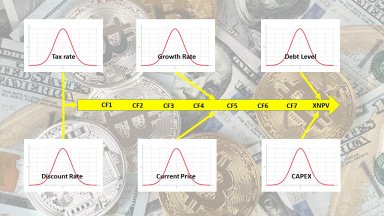
Publication number: ELQ-13465-1
View all versions & Certificate

The use of Monte Carlo Simulation in DCF Analysis - A Simple Example
Simple user-generated Monte Carlo Simulation for Discounted Cash Flow
Further information
The simulation presented here is simply to demonstrate the use of a user-generated probability distribution in discounted cash flow analysis.
The simulation presented here is for demonstration purposes only and should not be used for any large scale simulations. The underlying principles may be used.




